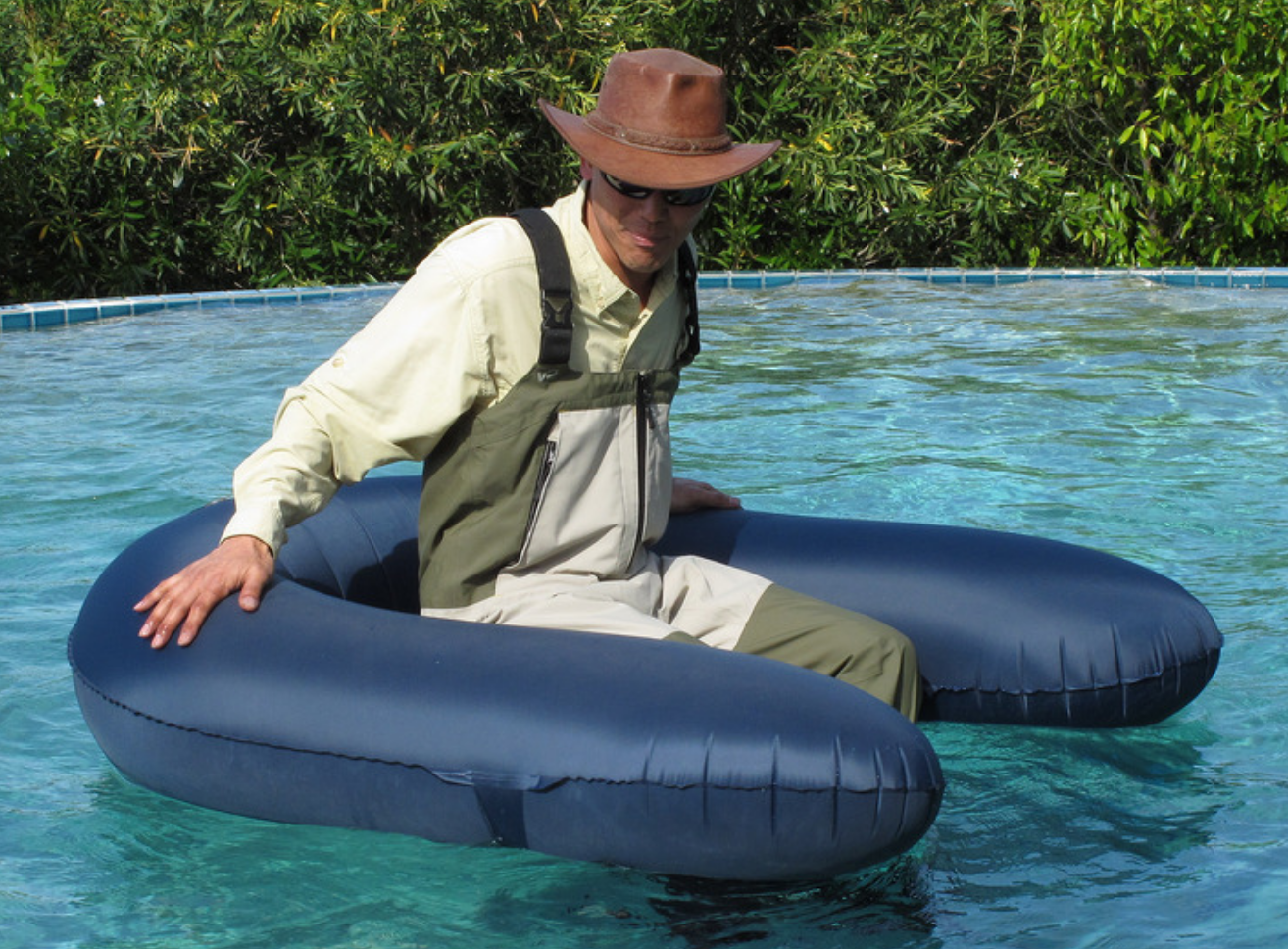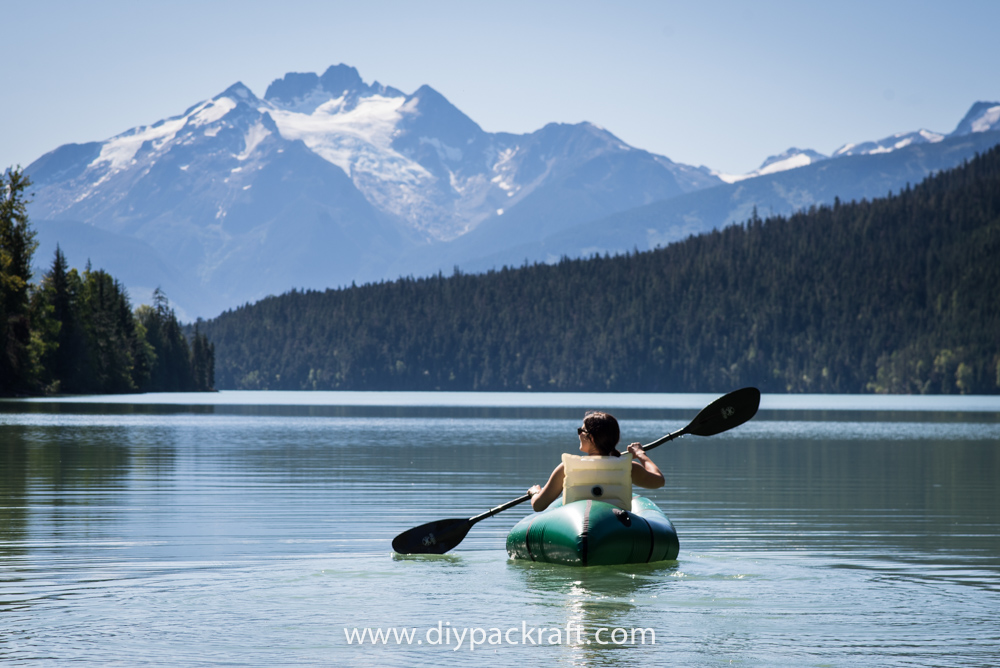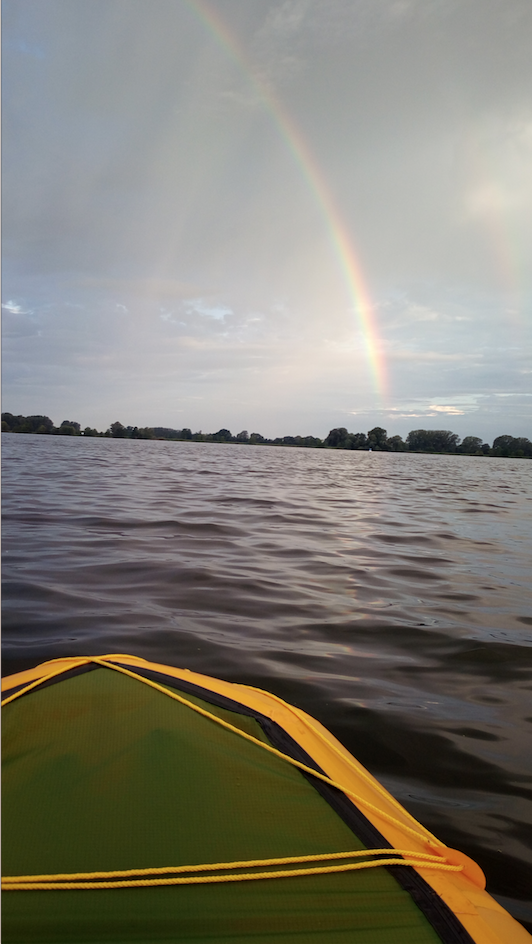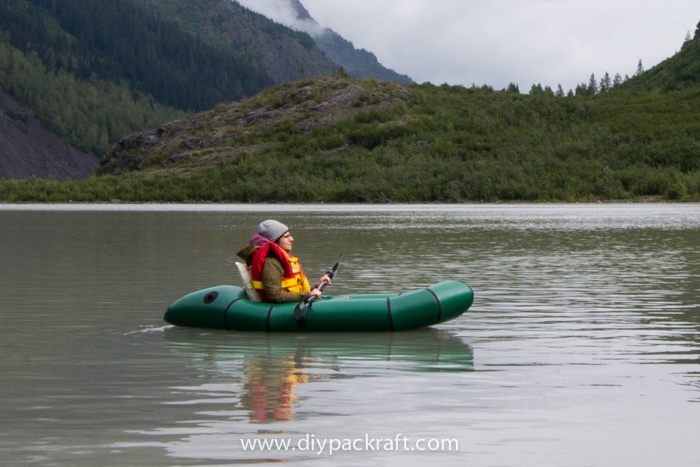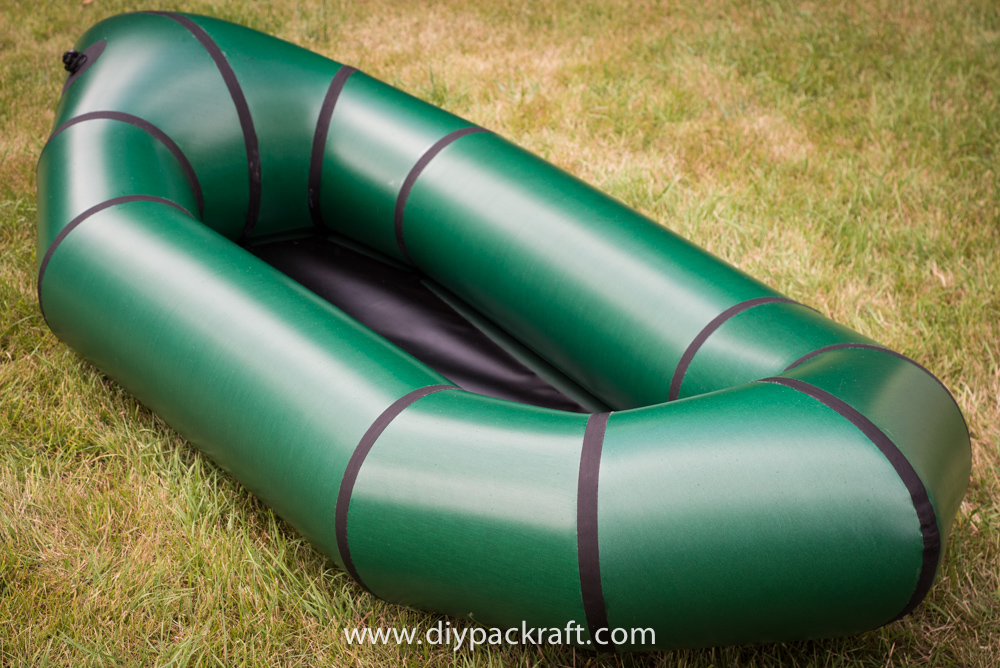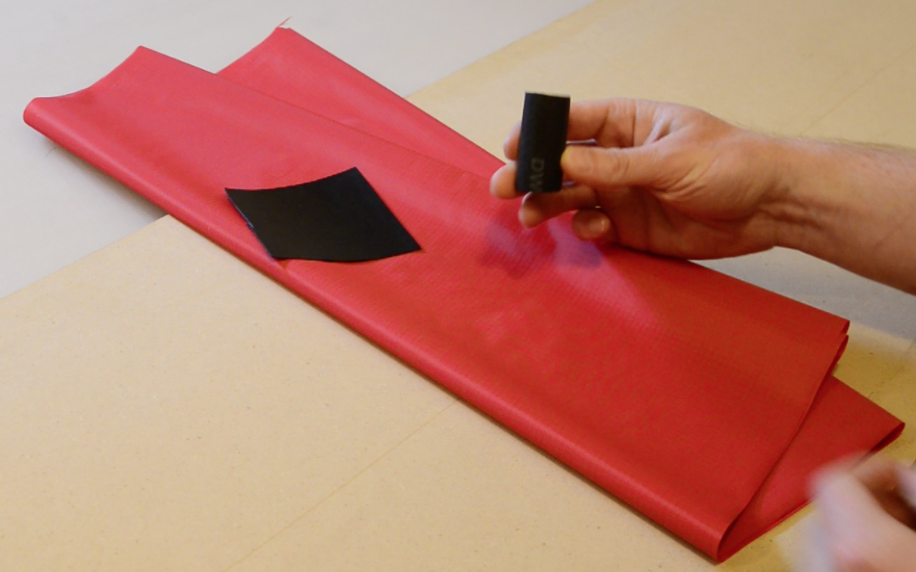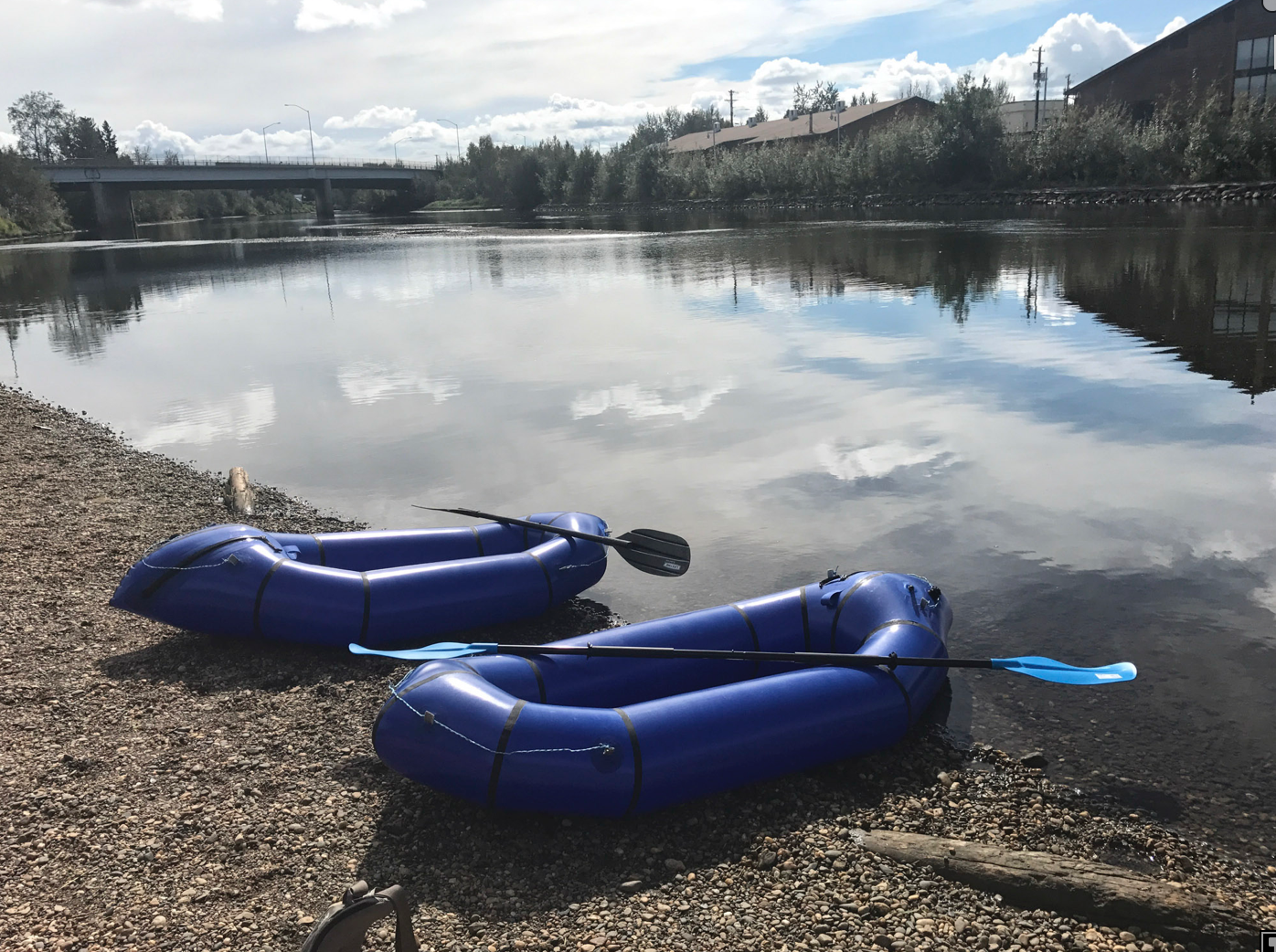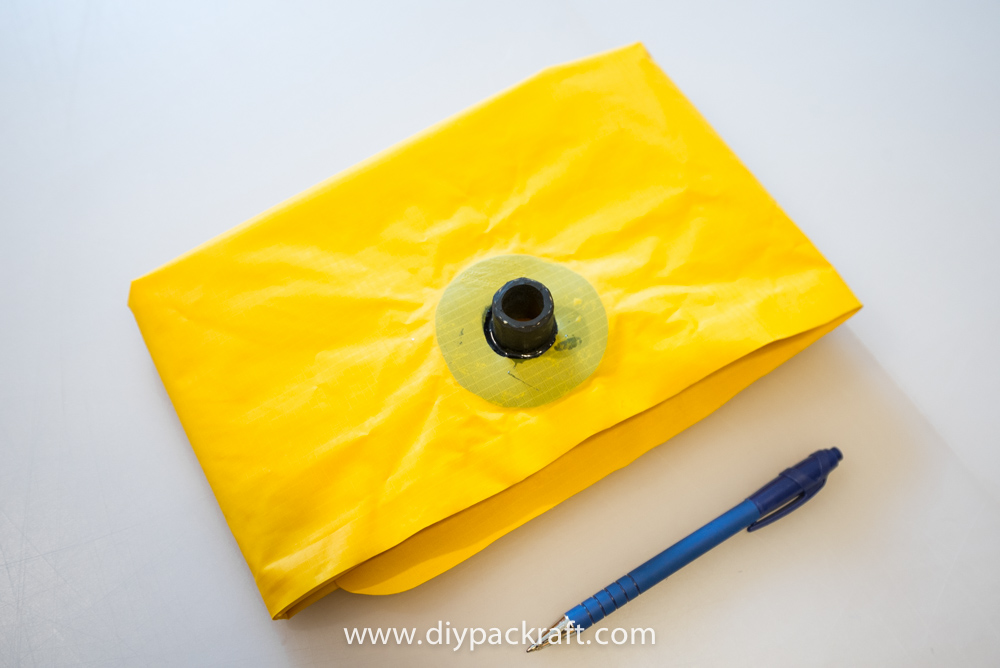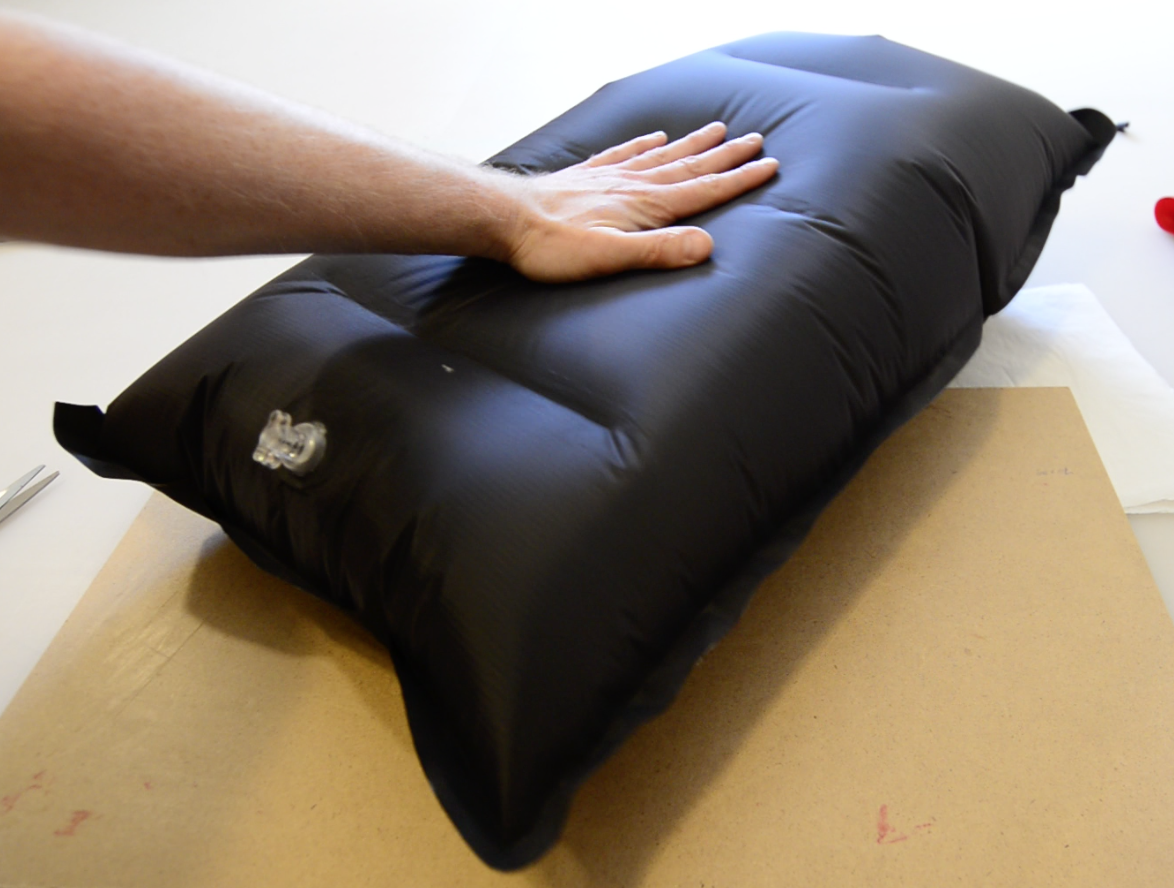-
Matt (Admin) replied to the topic DIY Packraft Photos in the forum DIY Packrafts 7 years, 2 months ago
That’s a big rubber duck 😀 Looks great!
-
Matt (Admin) wrote a new post 7 years, 2 months ago
Tom F. sent me this video and this link to a forum thread documenting the design and construction of a lightweight fishing float tube (a.k.a. bellyboat or belly boat) using heat sealable fabrics. […]

-
Matt (Admin) wrote a new post 7 years, 2 months ago
Nikki’s parents were visiting over the holiday weekend and they wanted to try out the new packraft, so I took the opportunity to take a few pictures to share. You can see that the weather was much better than the […]

-
Matt (Admin) replied to the topic DIY Packraft Photos in the forum DIY Packrafts 7 years, 3 months ago

-
Matt (Admin) wrote a new post 7 years, 3 months ago
For the maiden voyage of the V3 DIY Packraft, Nikki and I spent the weekend visiting some glaciers!

-
Wow! Some seriously awe inspiring pictures, we have a different setting of beauty here in Hawaii, so when I get to see authentic photos of such luscious and diverse, beautifully blanketed land it truly is a treat so thanks for posting them! How did everything go with the V3, were there any things you learned from the expedition?
-
Thanks, Allen! The main lesson was the value of a good back rest for lower back support, so I will be working on one of those in the future.
-
-
My favorite seat back, and the easiest, is a Crazy Creek folding camp chair. Not exactly a back packing item, but I can set a 2″ thick square boating flotation seat pad into the raft, top it with the crazy Creek chair and my daughter is up above the water and happy. Commercial versions that support the back and wrap around the hips are not popular among the hardcore here in Fairbanks. I bet Matt can develop something much better! The whitewater hardcore I know prefer a good kayak back band, supported with attachment loops or D-rings high on the inside of the raft. If using D-rings, they also attach their thigh braces to the same point. (I’m still looking for nice 1″ (25mm) aluminum D-rings, chrome rust, and the Titanium ones are a bit rough edged (DutchGear.com)). If using webbing one has to think through the connection so knees and back straps are connected and pulling against each other, not both building pressure on the side attachment patches in opposite directions.
Can’t wait to get my V3 built! Lets see, 1000D or 420D, that’s the question?
-
-
Matt (Admin) wrote a new post 7 years, 3 months ago
First Pictures of the new V3 DIY Packraft
 Here are some pictures of the new V3 DIY Packraft. This one is the 120 size, and has a 420D floor (TPU on both sides) and 210D tubes. As it is now, […]
Here are some pictures of the new V3 DIY Packraft. This one is the 120 size, and has a 420D floor (TPU on both sides) and 210D tubes. As it is now, […]-
Yes indeed!
-
Thanks, Rob! Yeah, the inflatable floor will be a removable insert instead of integrated into the boat – it’s just easier that way.
-
Awesome – it should be within the next week or two. Thanks!
-
Looks great! Wider seams, appear to be almost 40 cm wide?
-
Looks great! Wider seams, appear to be almost 40 cm wide?
-
Very, very nice.. Have to get me one of those..
-
Hi Hugh – I’ve updated the post to include the main differences. Thanks!
-
Thanks, Eliot!
-
They are heat sealed together 🙂
-
-
Matt (Admin) wrote a new post 7 years, 3 months ago
I’ve posted written instructions for assembling the inflation bag kit here. They are text-only, at the moment, but I will add photos and a video soon!

-
Matt (Admin) replied to the topic DIY Packraft Photos in the forum DIY Packrafts 7 years, 3 months ago
I just got this cool shot from Jeremy and Melissa in Alaska showing their first two DIY Packrafts on their maiden voyage!

-
Matt (Admin) replied to the topic Help & Questions re: DIY Packraft Construction in the forum DIY Packrafts 7 years, 3 months ago
Yes, that could work for the V2 plans if you extend the tube pieces slightly (so the ends overlap enough to bond them together).
-
Matt (Admin) replied to the topic What is everyone doing for cargofly inner gear bags? in the forum DIY Packrafts 7 years, 3 months ago
I’ve been using lightweight drybags like you’re thinking of using, though I haven’t bothered adding tiedowns or clips for them, as I don’t paddle any crazy whitewater (yet…). Cheers!
-
Matt (Admin) replied to the topic DIy Kit for sale in Holland/New Zealand. in the forum DIY Packrafts 7 years, 3 months ago
I have disabled direct messaging between forum members due to a spam issue, so please contact me for Chris’ contact info. Thanks!
-
Matt (Admin) replied to the topic Ultralight DIY Packraft in the forum DIY Packrafts 7 years, 3 months ago
Hi Bill,
Yep, the ultralight packraft is… ultralight! 😀
The 40D fabric seals at the same temperature as the heavier fabrics, so if you do find a trim sealing iron that is hot enough to seal it, please let us know – so far, I haven’t had any luck.
Cheers!
Matt
-
Matt (Admin) replied to the topic Help & Questions re: DIY Packraft Construction in the forum DIY Packrafts 7 years, 3 months ago
I’m sorry, I’m not sure what you mean. Can you maybe draw a picture to help explain?
-
Matt (Admin) wrote a new post 7 years, 3 months ago
I’ve been working on a new packraft design for some time now, incorporating several improvements over the current V2 kits, including tougher floor material, easier construction, more sizes, and better […]

-
Hey Matt
Sorry to hear you have had people stealing your designs for their own profit, that sucks! I can only imagine how much time and effort it must take to plan and test your designs – the V2 packraft I’ve made from your kit has handled beautifully without any leaks since I first made it. I was hoping to purchase plans or a kit for the 2-person voyager in order to make it in time for training for and competing in Godzone, an adventure race I am doing next year in NZ. When do you think kits for the 2-person will be online?
Thanks for your hard work
-
Thanks, Joe – the 2-person kits will be available at the same time as the regular V3 kits. Cheers!
-
-
Hi Todd, I would start by reading the Fabrics, Tools, and Valves sections of the FAQ, above, and maybe check out the Forum as well, as there are some pictures of rafts people have made. Also check out the inflatable catamaran raft at http://www.cubenmaker.com. For seam sealing technique, check out the videos in the How-To sections above. Cheers!
-
Great! I hope to have it ready in the next week or two, but I can’t guarantee it.
-
Hi Tim – it will be approximately 4 pounds. Cheers!
-
Thanks, Brian – that means a lot to me! Best regards
-
Hi Mark – I will be designing a V3 version of the Ultralight packraft, but it will be slightly different because it will not use double-sided TPU fabric, so it will take a bit longer.
-
-
Matt (Admin) wrote a new post 7 years, 3 months ago
Some time ago I posted a page about making your own inflation bag*, and since then several people have asked me to supply parts so they won’t have to spend time and money sourcing them elsewhere.
In response, […]

-
Yess Matt thank you so much! Deffinately excited about this and the next update, I have already begun imagining a way to add clips to the bag so it could double function as a drybag! Such amazing work your doing, I for one appreciate it!
-
I am especially interested in your connector that fits the fine Boston Valves. They are great valves, but an odd thread I have not been able to successfully fashion on my lathe. Worth the price of a kit, though I made my bag out of silnyl not TPU.
-
Hi Bruce – the connector is unthreaded silicone hose, which is soft enough to screw into the Boston valve’s unusual threads without damaging them, and there’s no risk of cross-threading. The size fits the larger (drain) part of the valve, which makes inflation muchfaster than forcing air through the check valve part of the Boston valve. Once the packraft is full, I pop off the inflation bag, screw in the check valve, and top off the air pressure through the check valve by mouth. The whole process takes under three minutes.
I’m a fan of silnylon too, but keeping with my no-sewing promise I’m sticking with TPU (though Cuben fiber/Dyneema would also work well).
-
Great, I can find silicone tubing online. Did you use 20mm ID x 25mm OD size tubing? (The next size smaller is 16mm ID x 20mm OD, while other suppliers offer fractional inch measurements up to 7/8 inch but I think that’s too small.
Bruce-
I used 7/8″ and it seems to work well!
-
-
Great, I can find silicone tubing online. Did you use 20mm ID x 25mm OD size tubing? (The next size smaller is 16mm ID x 20mm OD, while other suppliers offer fractional inch measurements up to 7/8 inch but I think that’s too small.
Bruce
-
-
-
-
Matt (Admin) wrote a new post 7 years, 3 months ago
I’ve just finished writing up instructions for the new seat kits, and they’re posted here!

-
Matt (Admin) replied to the topic DIY Packraft Photos in the forum DIY Packrafts 7 years, 3 months ago
Awesome! Thanks for posting, Dave! It looks great 😀
-
Matt (Admin) replied to the topic Valve hack in the forum DIY Packrafts 7 years, 4 months ago
Nice work – I like it!
-
Matt (Admin) replied to the topic What paddles? in the forum DIY Packrafts 7 years, 4 months ago
I’m currently using a very light two piece carbon kayak paddle made by Werner, which was a very generous gift; if you’re making or purchasing a paddle, I recommend choosing a four piece design because it’s easier to pack.
When it comes to paddles, spending more money generally gets you a lighter, stiffer paddle. Depending on the type of paddling…[Read more]
-
Matt (Admin) replied to the topic tpu side in the forum DIY Packrafts 7 years, 4 months ago
This is a common mistake that I’ve made myself, as it only requires a moment of inattention to damage the TPU coating with a hot iron. In most cases it only leaves a small mark on the fabric that doesn’t affect it’s performance, but if the iron is left in contact with the TPU long enough, it can make a hole.
The best way to patch a hole of any…[Read more]
- Load More
